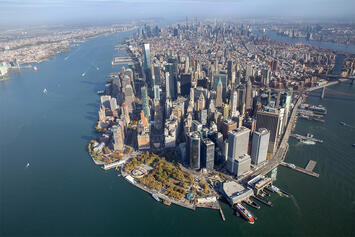
Talk of the future of (some) cities these days can bring out the pessimists, who warn of an “urban doom loop.” Yet just as the urbanistas overestimated the “back to the city” movement, they also may be underestimating the possibilities for an urban resurgence.
Cities can achieve a rebirth, but only if they make two critical realizations. One, they have to see their primary challenge as making themselves attractive to middle-class families, upwardly mobile immigrants, and entrepreneurs. Second, they have to redirect their efforts away from the giant steel-and-glass downtown towers that have much less to justify themselves than in the past and instead turn their attention to cultivating the richness of urban neighborhoods.
At the very least, this requires expunging the myth that big cities, particularly their dense cores, possessed an unchallengeable hold on the future. In 2018, Neil Irwin of the New York Times argued that where “a small number of superstar companies choose to locate” would dominate the economic future, leaving the spaces between them as desolate flyover zones thinly populated by society’s losers.
The Office Disaster
If that was ever the case, it is not now. Virtually every major downtown in America, including San Francisco, Chicago, Boston, Philadelphia, Washington, Los Angeles, and New York, is suffering from record levels of vacancy, with downtown street traffic in some cities down by 30 to 40 percent since 2019. In San Francisco, some 100 downtown businesses have closed, and nearby Union Square has lost roughly half its tenants.
Some hope that the fanciest class-A buildings will recover, but the overall picture is dismal indeed, as evidenced by Blackstone’s decision to sell a prestigious Broadway tower at half price. If we face another financial crisis, downtown real estate — bad commercial real-estate loans are now larger than loss reserves of the largest U.S. banks — will likely stand at the core of it. Faced with a credit crunch worse than during the financial crisis, the vast majority of real-estate investors, notes Bloomberg, believe the office market is destined for a steep crash.
Read the rest of this piece at National Review.
Joel Kotkin is the author of The Coming of Neo-Feudalism: A Warning to the Global Middle Class. He is the Roger Hobbs Presidential Fellow in Urban Futures at Chapman University and and directs the Center for Demographics and Policy there. Learn more at joelkotkin.com and follow him on Twitter @joelkotkin.
Photo: Marco Verch via, Flickr, under CC 2.0 License.












